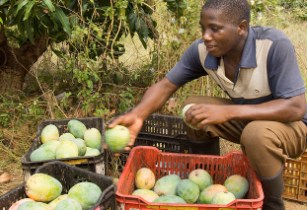Australia has topped the list of countries with the largest organic agricultural area
Research Institute of Organic Agriculture FiBL and IFOAM – Organics International has presented the latest global data on organic farming at the BIOFACH fair in Nuremberg. The statistical year book, 'The World of Organic Agriculture', was launched on Wednesday.
According to Ecovia Intelligence, the global market for organic food has reached US$89.7bn in 2016. The United States has led the market with US$48.7bn, followed by Germany (US$11.9bn), France (US$8.4bn) and China (US$7.4bn). Meanwhile, major markets continued to show double-digit growth rates in 2016. The French organic market grew by 22 per cent, Switzerland recorded the highest per capita spending (US$344) while Denmark had the highest organic market share (9.7 per cent).
In 2016, 2.7mn organic producers were reported. India clocked the highest number of producers (8,35,200), followed by Uganda (2,10,352), and Mexico (2,10,000).
A total of 57.8mn ha were organically managed at the end of 2016, logging a growth of 7.5mn ha over 2015- the largest growth ever recorded. Australia has topped the list of countries with the largest organic agricultural area (27.2mn ha), followed by Argentina (3mn ha) and China (2.3mn ha).
Almost half of the global organic agricultural land is in Oceania (27.3mn ha), followed by Europe (13.5mn ha), and Latin America (7.1mn ha).
The countries with the largest organic share of agricultural land of their total farmland are Liechtenstein (37.7 per cent), French Polynesia (31.3 per cent) and Samoa (22.4 per cent). In 15 countries, 10 per cent or more of all agricultural land is organic.





